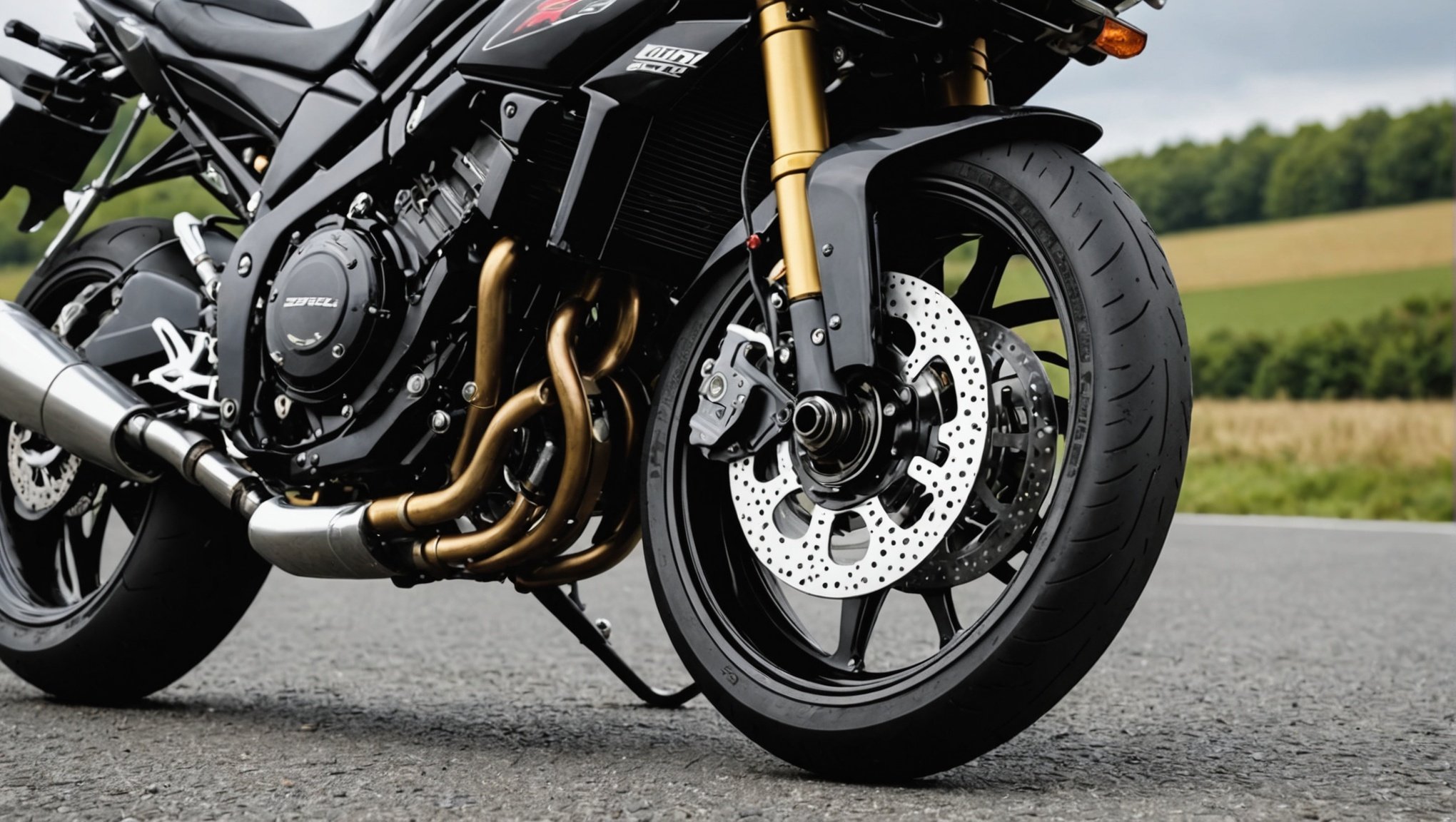Ultimate Guide to Tuning Your Sport Bike Suspension for Passenger Comfort on UK Roads
When it comes to enhancing the comfort and performance of your sport bike, especially when carrying a passenger, tuning the suspension is paramount. This comprehensive guide will walk you through the intricacies of adjusting your bike’s suspension to ensure a smooth, stable, and enjoyable ride for both you and your passenger on UK roads.
Understanding Your Bike Suspension
Before diving into the adjustments, it’s crucial to understand the components and how they work together. Your sport bike’s suspension system includes the front fork and the rear shock, each playing a critical role in absorbing bumps, maintaining stability, and ensuring comfort.
Also to discover : Ultimate Guide to Selecting Sport Bike Gloves for Superior Grip in Wet UK Conditions
Front Fork
The front fork is responsible for handling the front end of your bike. It consists of the fork tubes, the spring, and the damping system. Adjusting the fork involves setting the sag, rebound damping, and compression damping.
Rear Shock
The rear shock handles the rear end of your bike and works similarly to the front fork but often includes additional features like preload adjustment. The rear shock absorbs the impact from the rear wheel and helps in maintaining the ride height and stability of the bike.
Topic to read : Transforming Your Sport Bike”s Exhaust: A Guide to Compliance with UK Noise Regulations
Setting the Sag
Sag is the amount of suspension travel used when the bike is under the weight of the rider and, if applicable, a passenger. Proper sag setting is essential for maintaining the correct ride height and ensuring optimal suspension performance.
- Static Sag: This is the amount of suspension travel used when the bike is stationary and under the weight of the rider and passenger.
- Dynamic Sag: This is the amount of suspension travel used when the bike is in motion.
To set the sag, follow these steps:
- Measure the Suspension Travel: Use a zip tie or a marker to mark the suspension stanchion or shock body.
- Add Weight: Have the rider and passenger sit on the bike.
- Measure the Sag: Measure the distance between the marked point and the current position of the suspension stanchion or shock body.
- Adjust: Adjust the preload to achieve the recommended sag (usually around 25-30% of the total suspension travel).
Adjusting Preload
Preload adjustment is critical, especially when carrying a passenger, as it affects the ride height and the overall feel of the bike.
Why Preload Matters
- Ride Height: Proper preload ensures the bike maintains the correct ride height, which is crucial for stability and handling.
- Weight Distribution: With a passenger, the weight distribution changes, and adjusting the preload helps in compensating for this additional weight.
Here’s how to adjust the preload:
- Threaded Spring Preload: Most rear shocks come with threaded spring preload adjusters. Turn the adjuster clockwise to increase the preload and counterclockwise to decrease it.
Fine-Tuning Damping Settings
Damping settings are divided into two main categories: rebound damping and compression damping.
Rebound Damping
Rebound damping controls how quickly the suspension returns to its original position after being compressed. Here’s what you need to know:
- Too Much Rebound Damping: Makes the suspension return too slowly, causing instability, especially during cornering.
- Too Little Rebound Damping: Makes the suspension bounce back too quickly, resulting in a jittery ride.
To adjust rebound damping:
- Start with the manufacturer’s recommended settings.
- Make small adjustments based on your riding style and the type of terrain you ride on.
- For example, if you ride on smooth roads, you might prefer a higher rebound damping setting. For off-road or bumpy roads, a lower setting might be more suitable.
Compression Damping
Compression damping handles how the suspension responds to bumps and rough road surfaces.
- Too Much Compression Damping: Makes the bike feel harsh over rough surfaces.
- Too Little Compression Damping: Makes the bike feel unstable and mushy.
To adjust compression damping:
- Follow a similar approach to rebound damping, starting with the manufacturer’s settings and making adjustments based on your riding conditions and style.
Practical Adjustments for Passenger Comfort
When carrying a passenger, several adjustments can enhance comfort and stability.
Weight Considerations
- Additional Weight: With a passenger, the total weight increases, which affects the suspension. Increase the preload to compensate for this additional weight.
- Weight Distribution: Ensure the weight is evenly distributed between the front and rear of the bike to maintain stability.
Riding Style Adjustments
- Smooth Riding: For passenger comfort, aim for a smoother ride by adjusting the damping settings to absorb bumps more effectively.
- Cornering Stability: Ensure the rebound and compression damping are set to provide stability during cornering, which is crucial when carrying a passenger.
Example Adjustments for Common Riding Scenarios
Here are some example adjustments for different riding scenarios:
High Speed Riding
- Higher Preload: To maintain ride height and stability at high speeds.
- Higher Rebound Damping: To prevent the suspension from bouncing back too quickly.
- Higher Compression Damping: To handle the higher speeds and smoother roads.
Low Speed Riding
- Lower Preload: To allow for better absorption of bumps and irregularities.
- Lower Rebound Damping: To ensure the suspension returns quickly to its original position.
- Lower Compression Damping: To provide a softer ride over rough surfaces.
Table: Comparative Adjustments for Different Riding Conditions
| Riding Condition | Preload | Rebound Damping | Compression Damping |
|---|---|---|---|
| High Speed | Higher | Higher | Higher |
| Low Speed | Lower | Lower | Lower |
| Off-Road | Lower | Lower | Lower |
| Smooth Roads | Higher | Higher | Higher |
Real-World Tips and Anecdotes
Adjusting for Real-World Riding
- Trial and Error: Fine-tuning your bike’s suspension is a trial and error process. Be patient and make small adjustments based on your riding experience.
- Regular Maintenance: Regularly check and maintain your suspension components to ensure optimal performance.
Example from a Rider
“I recently adjusted my rear shock’s preload and damping settings to accommodate my passenger. The difference was night and day. The bike felt more stable, and my passenger was much more comfortable, especially during long rides on UK roads.” – John, Sport Bike Enthusiast
Detailed Checklist for Adjusting Your Bike Suspension
Here’s a detailed checklist to help you adjust your bike suspension for passenger comfort:
-
Measure and Set Sag:
-
Measure the suspension travel.
-
Add weight (rider and passenger).
-
Measure the sag.
-
Adjust the preload to achieve the recommended sag.
-
Adjust Preload:
-
Increase preload for additional weight.
-
Adjust based on weight distribution.
-
Adjust Rebound Damping:
-
Start with manufacturer’s settings.
-
Adjust based on riding style and terrain.
-
Test and fine-tune.
-
Adjust Compression Damping:
-
Start with manufacturer’s settings.
-
Adjust based on riding style and terrain.
-
Test and fine-tune.
-
Test and Fine-Tune:
-
Take the bike for a test ride.
-
Make small adjustments based on the ride feel.
-
Repeat until optimal settings are achieved.
Tuning your sport bike’s suspension for passenger comfort is a meticulous but rewarding process. By understanding the components, adjusting the sag, preload, rebound damping, and compression damping, you can significantly enhance the comfort and stability of your ride.
Remember, each bike and rider is unique, so it’s essential to experiment and find the perfect balance that works for you and your passenger. With patience and the right adjustments, you can transform your sport bike into a comfortable and stable machine, ready to tackle the diverse roads of the UK.
As Daniel from Specialized Chisel review notes, “The rear suspension was not what I would call refined. It has more traction and comfort than a hardtail but it definitely wasn’t a trail bike in that regard.” However, with the right adjustments, even a sport bike can offer a refined and comfortable ride for both the rider and the passenger.
So, don’t shy away from experimenting with your bike’s settings. Your reward will be a bike that feels like an extension of yourself, offering precise control, exceptional cornering stability, and a smooth, enjoyable ride for all.






